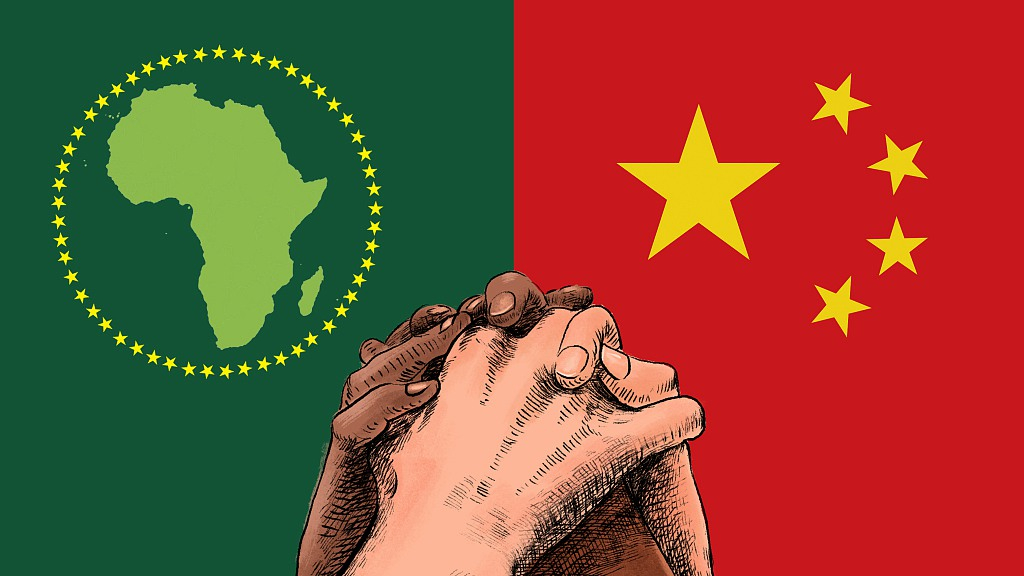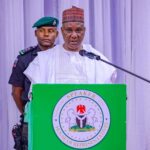Just last November, China’s South West province of Guizhou announced that its last nine impoverished counties have been lifted out of absolute poverty, which translated that all registered impoverished counties and areas in the world’s most populous country have shaken off, the pangs of poverty.
This is ten years ahead of the United Nations hypothetical deadline for lifting all humanity out of poverty, outlined in the 2020 Agenda for sustainable development. The average annual net income of the formerly extreme poor people in these counties was reported to have risen to about 1,740 USD, well above the national poverty line.
- Nigerians celebrate peaceful, low-key Christmas amid COVID-19
- Nigeria’s biggest sports stars in 2020
Crossing the finish line of lifting China’s 1.4 billion people out of poverty well above the poverty line defined by the World Bank is momentous and quite significant beyond the border of the Peoples Republic of China.
China’s poverty alleviation measures and drive towards the end of poverty was not simply built on raising the incomes of poor people but in giving them a solid foothold to meaningful livelihood. In designing the pathway to poverty elimination, the governing Communist Party of China (CPC) has outlined “two no worries” and “three guarantees” which spelt out that the fundamental criteria to measure poverty elimination must consist that poor people must not worry about food and clothing (two worries) and should be guaranteed compulsory education for their children, basic medical care and safe housing accommodation, (three guarantees).
The core criteria for assessing poverty elimination means that in addition to having sufficient income, China does not consider people to be out of poverty until they have enough food and clothing, guaranteed basic health care, access to compulsory education, and safe housing. Against the background of these vital fundamentals, the end of poverty in China despite been a milestone and epochal, acquires immense global significance and more especially for Africa, where poverty remains the most existential and potent threats to social and political stability.
The China’s end of poverty feat is even more significant, when it is understood that the final battle against the scourge was launched in 2013, at the assumption of the leadership of the party and state by President Xi Jinping, who is also the general secretary of the Communist Party of China, (CPC). As at then, about 100 million Chinese People were still mired in extreme poverty and President Xi Jinping who himself has suffered the cruel hands of poverty took it upon himself to lead the battle against the scourge that has tormented China for millennia.
A third of his provincial visits were reported to be, to the villages and communities most ravaged by poverty and talking to poor people himself and engaging party cadres and government officials deployed to oversee the poverty reduction and elimination drive were his most passionate domestic endeavor. On average, about 10 million and more people were lifted out of poverty since 2013 and at the start of this year, only about 5.3 million people were still under the pangs of poverty.
Even with the outbreak of COVID-19 pandemic, President Xi Jinping who has always insisted that “poverty relief work should be as “meticulous like doing embroidery, rather than akin to “killing fleas with a hand-grenade,” restated the party and government’s abiding and solemn commitment to eliminate poverty before the end of 2020, that would ultimately launch the country, into a “moderately prosperous society in all respects,” well before the one hundred year anniversary of the founding of the Communist Party of China in July 2021.
Just last month, the party and the government honored its solemn pledge to all Chinese rural impoverished residents out of poverty, the first of its kind in all human history and achieved within the shortest time.
The final push to end poverty actually commenced in 2013, when the President Xi Jinping went to Shibadong, a village of mainly Miao ethnic minority in the mountains of China’s central Hunan province. There, he outlined the framework of targeted poverty alleviation and vowed to see the end of poverty in his massive country.
Following this, a national road map and action plan which consisted in identifying all impoverished people and the factors that led to their poverty were enumerated.
The enumeration resulted in each household or individual been given a customized poverty relief plan which consisted in getting help to start a small business, relocating families from inhospitable mountainous areas and receiving training to find job in the cities. And to accomplish this, a national system to keep track of progress and ensure the measures were having the desired effect was designed. To ensure that the broad roadmap and specifics of the national poverty relief did not derail, President Xi Jinping put the totality of the unified leadership of the party and its 90 million members to work. Nearly 3million party cadres and public sector officials were sent from the cities and towns to villages to fight poverty at the frontline.
President Xi Jinping who led the most populous country in the world to end poverty said recently that the achievement is the result of the “largest and most vigorous battle in human history against poverty’’.
China still has some acute challenges to resolve, especially caused by inadequate and unbalanced development and also had the onerous task to improve follow-up support for people minted freshly out of poverty to ensure that they are able to settle down, stayed employed, and become wealth creators.
The key implications of the end of poverty in China for the rest of the world, especially for Africa is that poverty is not a destiny to be accepted as fate but a social scourge that can be eliminated with requisite political will, focused and consistent policy framework. China’s poverty relief trajectories and triumph might be a tough act to follow and which was made possible by a disciplined party of integrity, unwavering in its historic mission of “serving the People whole-heartedly” and an abiding commitment to “putting the people first,” nonetheless, the core category of policy instrument of sustainability and consistency in addition to popular mobilization can serve to enrich the anti-poverty policy platforms of various governments in Africa.
To relieve poor people of the scourge, is not a humanitarian gesture but an existential social policy articulated from serious interrogation of specific national condition and social reality and driven by the indomitable political will of serious leadership. Such policy options that can drive poverty relief plan must enjoy reasonable and broad consensus and in the case of Africa, inclusive of both ruling and opposition parties and broad range of stakeholders.
The first step in the drive for poverty relief in Africa is to shatter the myth sustained through some customary and religious practices that poverty is a kind of destiny that some people must accept to live with. This kind of sentiment existed in the old China until it was smashed by the socialist revolution and national liberation that ushered in, the founding of modern China.
Africa may not need to travel through the trajectories of modern China but there are basic essentials that are inevitable in any meaningful roadmap to alleviate poverty.
Africa now has the added arsenal of leveraging China’s experience in ending poverty, to drive its homegrown policy platform to bring relief to the poor people and also turn them into a new army of wealth creators for renascent Africa.China has shown the way that poverty can be ended.
Mr. Onunaiju is research director, Centre for China Studies, Abuja.

 Join Daily Trust WhatsApp Community For Quick Access To News and Happenings Around You.
Join Daily Trust WhatsApp Community For Quick Access To News and Happenings Around You.


